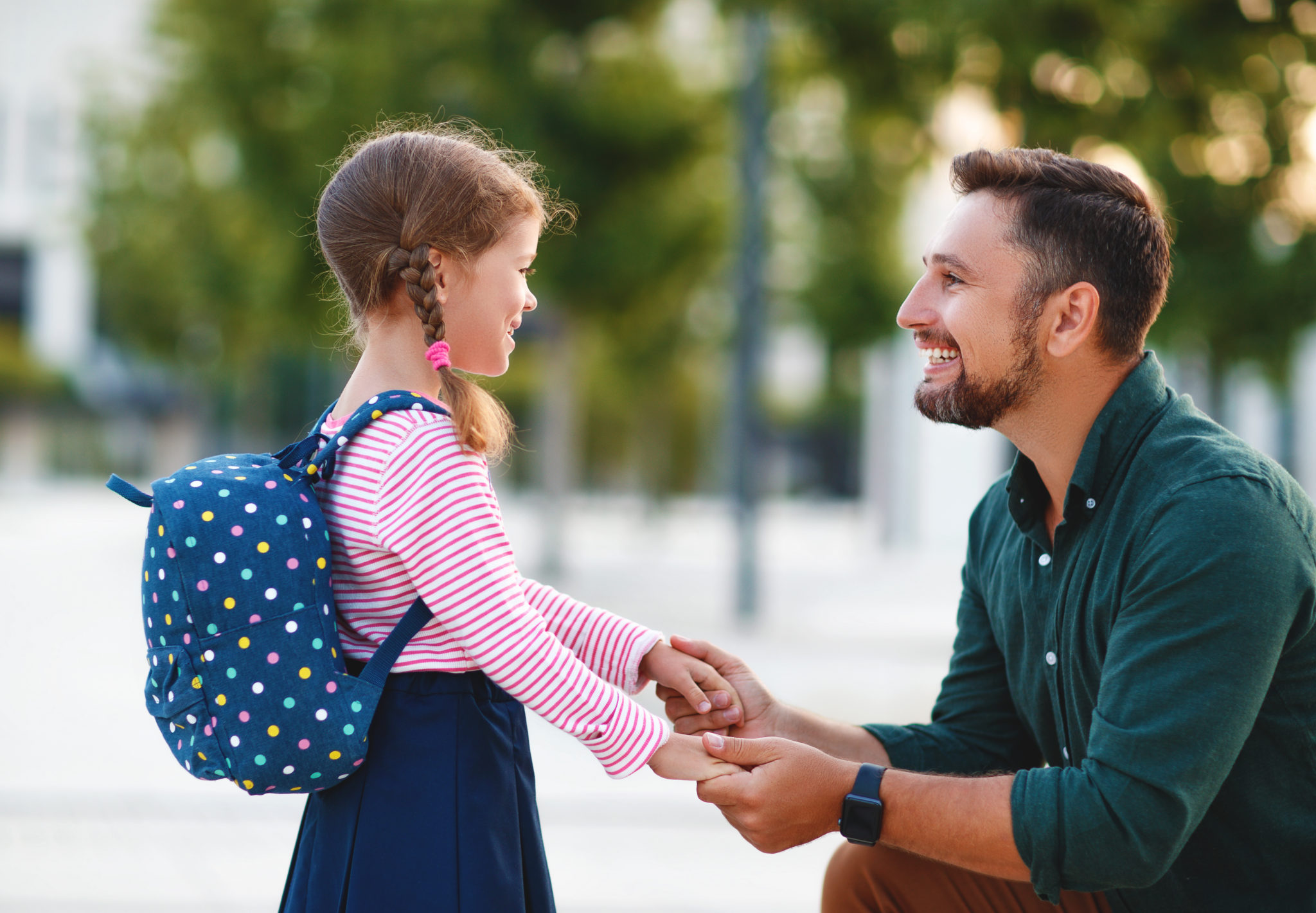Discovery Point Blog

Back to Daycare, School, and Activities? How to Talk to Kids About Our New Reality
The COVID-19 pandemic has changed the daily lives of families worldwide. Schools have been closed, public gatherings have been discouraged or banned completely, and many nonessential businesses have shut their doors for the time being.
In addition to adjusting to this new reality, there are many new practices for children to learn and become accustomed to, from social distancing to mask-wearing. Below, we’ve outlined some recommendations you can use to help your child cope with this seemingly constant state of change.
Balance Informing with Listening
Ensuring that children are informed about the pandemic in an age-appropriate manner can help them to have a sense of control over what they can do to protect themselves and those around them. However, it’s important to not volunteer unnecessary details that could lead them to imagine a worst-case scenario.
Instead, let your children’s questions guide the conversation. Providing honest, accurate, and developmentally appropriate answers to these questions can reduce their fears and offer reassurance that the adults in their lives are doing their best to protect them.
Of course, at this point in time, there are many questions we still don’t have answers to. Don’t hesitate to tell your child “I don’t know” when you —and even the experts —simply don’t have an answer. Showing that there isn’t always a concrete answer to our questions can help them get comfortable with uncertainty and encourage resilience as your family navigates change in the upcoming months.
Encourage Familiarity with Masks
Masks are becoming a crucial part of the “new normal” as they help slow the spread of the virus indoors and in areas where social distancing is difficult to implement. As important as masks are, they can take some getting used to — especially for children. A child’s reactions to having to wear a mask themselves and seeing adults in masks often depends on their age. For younger children who rely on facial expressions for feedback and communication, mask-wearing can be especially difficult. However, this hesitance can typically be overcome with reassurance from a parent and increased exposure to mask-wearing adults over time.
Keeping masks around during playtime can also be a helpful way to encourage familiarity with this new item. Kids can practice wearing masks while pretending to be doctors or nurses, or show their stuffed animals how to wear masks. They can also become involved in mask-making by selecting the fabric pattern for their mask or by decorating a pre-made mask with stickers or markers.
Prepare for Re-Entry into a Changed Environment
When the time comes, some children may be excited to return to school, daycare, or other activities that were once a part of their normal routine. Others could be scared they’ll catch the virus or frightened by new and unfamiliar safety measures they’re required to take part in.
The best way to ease these fears is to give your child plenty of opportunities to express how they feel. Here are a few things to keep in mind as you listen:
- Allow plenty of time for questions. Children often express their worries through questions. Sometimes they’re not looking for answers, but rather a chance to be heard. Simply being listened to can help diffuse children’s fears while also giving parents a better understanding of the specific worries on their child’s mind.
- Show understanding. Now’s not the time to dismiss your child’s feelings. While it is important to dispel any fantasies they’ve dreamed up, it’s also key to acknowledge the feelings behind these thoughts and show you understand why your child feels uneasy. Follow this up with factual information that can help give your child confidence and reassurance.
- Remind them the adults in their life are focused on their safety. Take the time to remind your child what the school, daycare, or other establishment is doing to keep students and staff members safe. Help them understand what they can expect as well as how they can assist adults by taking part in these safety measures (regular handwashing, mask-wearing, coughing into the elbow, etc.).
- Be ready to reassure. During this uncertain time, you may notice your child is more clingy or needy than before. They may want more physical affection, more time alone with you, or invent comforting rituals. Do your best to meet these new needs and slow down your family’s schedule to ensure your child feels supported as they start to return to previous routines.
Parenting during a pandemic is new for all of us, and it’s certainly not easy. Simply being a listening ear and a reliable source of information is a huge step in the right direction and will help your children stay calm as they learn and grow in this new environment.


